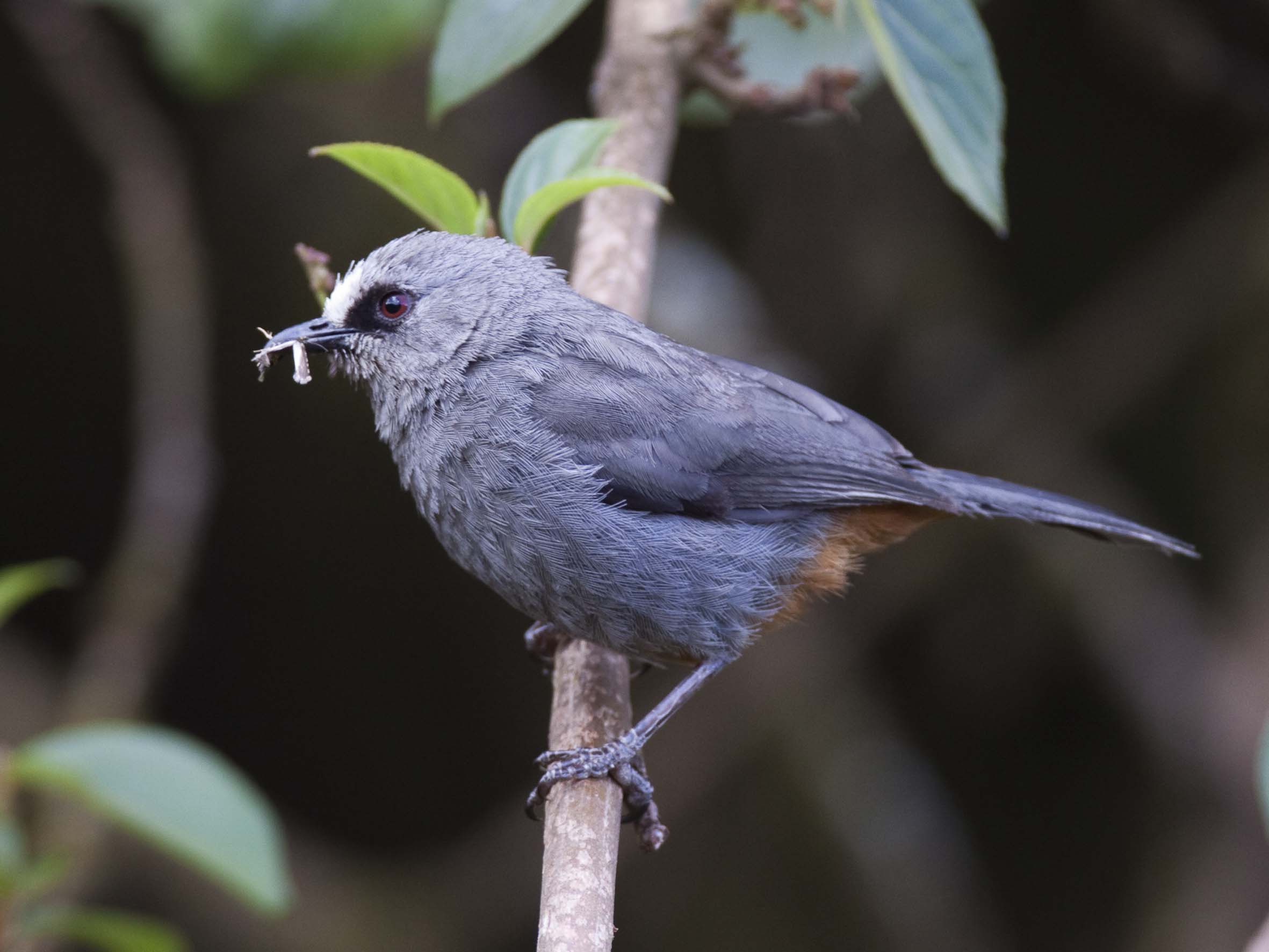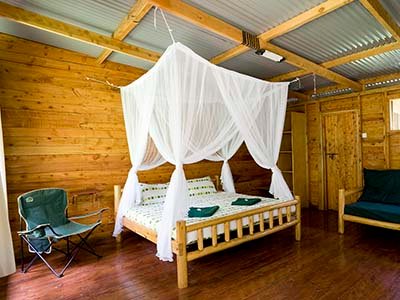The Bale Mountains National Park in Ethiopia is a crown jewel and a must-see for nature and wildlife enthusiasts.
The park, which extends over 2,150 square kilometers and is located in the Oromia Region National State, is home to a wide variety of wildlife, including several indigenous species. Bale Mountains National Park is home to a wide variety of mammals endemic to Ethiopia, including the spectacular Walia Ibex, the captivating Gelada Baboon, and the majestic Ethiopian Wolf.
The park is a haven for many kinds of species, but it also has beautiful scenery and interesting natural features. The Sanetti Plateau, one of the park’s most recognizable features in southern Ethiopia, is a high-altitude plateau that rises an average of 4,000 meters above sea level. The plateau attracts hikers and birdwatchers due to its unearthly splendor.
In the early 1970s, the park was formed as a game reserve to safeguard the Mountain Nyala, a kind of antelope found only in Ethiopia and hence in risk of extinction. The reserve was extended and became a national park in 1974 to further conserve the rare Bale Mountain habitat.
Since then, the park’s breathtaking beauty and rich species have attracted a steady stream of visitors and researchers. Overgrazing, deforestation, and poaching are all problems that affect the local populations and hence the park. There are current initiatives under progress to fix these problems and secure the park’s future for its people.
Topography, Vegetation and Climate of Bale Mountains National Park
Bale Mountains National Park is a unique destination in Africa since it features three distinct ecosystems. Several glacial lakes, rivers and waterfalls may be found in the lowland woods and valleys located between 2,500 and 3,300 metres in the north, close to the town of Dinsho. On the Sanetti plateau, alpine lakes are another distinctive feature. Trees such as the hagenia abyssinica and juniperus procera are unique to this area and may be found in abundance here.
The Sanetti Plateau’s Afro-alpine moorlands are the greatest continuous expanse of their height on the entire continent of Africa (the name comes from an Oromifa phrase that means site of strong winds). Giant lobelia may reach heights of up to 12 metres in this location.
There are steep mountains, deep valleys, and wide plains that make up the landscape of Bale Mountains National Park resulting in a diverse vegetation. The summit of Tullu Dimtu in the park is the second highest in Ethiopia after Ras Dashen in the Simien Mountains, with an elevation of 4,377 meters above sea level. The Sanetti Plateau, a large expanse of grassland and heather moorland, is at an altitude of more than 4,000 meters above sea level inside the park.
Both height and season have a significant impact on the Bale Mountains National Park’s climate and weather. The park has two different seasons: one dry (October–May) and one wet (June–September). Temperatures at the park’s higher elevations average between zero and twenty degrees Celsius year-round. Temperatures in the lowlands, on the other hand, range from around 20 degrees Celsius to about 35 degrees Celsius and are often warmer and dryer.
The park’s climate is a major factor in shaping the park’s ecosystems and the kinds of animals that live there. The park’s grasslands and savannahs thrive during the dry season, while the montane forests and afro-alpine moorlands rely on the plentiful rainfall. The Bale Mountains National Park is unlike any other place in Ethiopia due to its various temperature and weather patterns, which constantly transform the park’s terrain.
Wildlife and Endemic Species
Ethiopian wolves, Walia ibex, Gelada baboons, Bale monkeys, colobus monkey, Menelik’s bushbucks, Mountain nyalas, Starck’s hares, Bohor reedbuck, warthog, Giant forest hog and Giant mole-rats are just few of the animal species that call the park home. Of these animals, Menelik’s bushbuck, mountain nyala and giant mole rat, are endemic to the Bale Mountains.
The Ethiopian Wolf is one of the world’s rarest canids and one of the most well-known. The Bale Mountains National Park is one of the few sites in the world where you may view these stunning animals in their natural habitat, which is the Ethiopian Highlands.
Another well-known animal that lives in the Bale Mountains is the Walia ibex. These magnificent creatures are an endangered subspecies of wild goat found only in Ethiopia. Their unique curled horns may reach lengths of a meter.
Another interesting primate discovered in the area is the Gelada baboon. These baboons may have as many as 800 members in a single colony, and they are well-known for their complex social activities. Their thick fur and bright red breast markings make them easy to see.
Many different kinds of birds may be found in the Bale Mountains National Park, in addition to these indigenous creatures. The park is a haven for birdwatchers, as it has been home to more than 535 different species. The Prince Ruspoli’s Turaco, the Bale parisoma, and the Abyssinian catbird are just a few of the remarkable birds that may be seen here. All across the park, you may hear the distinctive sounds and songs of these birds, which are highly prized by ornithologists from all over the world.

Prince Ruspoli’s Turaco stands out from the crowd with its brilliant blue and green plumage and elaborate crest. The Bale Mountains National Park is one of the few spots in Ethiopia where you may observe this rare bird. In contrast, the Bale parisoma is a little bird with a white and black striped crown. Only the Harenna Forest inside the park is home to this species.
Another rare bird found in Bale Mountains National Park is the Abyssinian catbird. This bird’s melodious song is renowned well beyond its natural habitat. Its glossy black plumage and fiery red eyes make it instantly recognizable.
In addition to these well-known birds, a great variety of other avian species, including as raptors, waterbirds, and forest birds, call the park home. The park is home to a wide variety of bird species, so visitors are recommended to bring binoculars to get a closer look.
Activities and Attractions in Bale Mountains National Park
The Bale Mountains National Park is a fantastic destination for anyone who enjoys the great outdoors. The park caters to a wide range of visitors with its variety of hiking, animal viewing, camping, and cultural opportunities. Some of the highlights of Bale Mountains National Park are as follows.
Mountaineering and Hiking:
The park is a hiker’s paradise, with a plethora of paths and routes that pass through some of Ethiopia’s most beautiful scenery. There is a wide range of pathways, from strolls in the park to arduous multi-day hikes. The Sanetti Plateau, Harenna Forest, and Tullu Demtu Summit are three of the most well-known hiking destinations in the park. In the park, trekking is at its finest from November through March, during the dry season.
The most popular and lengthy route takes six days to complete. From Dinsho, it is possible to walk to Sodota in approximately four hours, and from there to Rafu, Sanetti, Worgona, and back to Dinsho in roughly the same amount of time every day. All you need to bring is a sleeping bag and food for your stay in the huts; we provide the pots and pans.
Wildlife Watching:
Several endemic species can only be found in Bale Mountains National Park and can’t be found anywhere else on Earth. Depending on what kind of wildlife you want to observe, different parts of the park and different times of day will be optimal. The ideal times of day to see the Ethiopian Wolf, one of the most sought-after creatures in the park, are first thing in the morning and late in the day. Sanetti Plateau and Web Valley are the greatest spots to observe them. Tourists who wish to increase their chances of viewing these evasive animals can do so by participating in guided excursions and safaris.
Camping:
Camping is a fantastic way to see the Bale Mountains National Park and everything it has to offer. There are numerous authorized campsites in the park, each with its own bathroom and fire pit. There are no stores or eateries within the park, so visitors will need to carry their own supplies. Camping is permitted only in established locations, and guests are expected to observe all park restrictions.
Cultural Experiences:
The Oromo are the most numerous ethnic group in the region immediately around the park, and a fantastic way to learn about their culture is to travel to nearby towns and villages. Travelers may experience authentic cultural events including coffee ceremonies, weaving displays, and live music and dance shows. The Bale Mountain Lodge also provides cultural tours, where guests may meet locals and gain insight into conventional farming practices.
Conservation Efforts in Bale Mountains National Park
Bale Mountains National Park is an area of tremendous conservation importance in addition to its incredible natural beauty and rich biodiversity. The park has garnered international attention from environmentalists thanks to the unique habitats and endemic animals it protects. Some of the measures taken to save the park’s flora and fauna are described here.
Efforts to Safeguard the Park’s Flora and Fauna
Because of its abundance of rare plant and animal species, Bale Mountains National Park has been declared an Important Bird Area. In addition to the Ethiopian wolf, the Walia ibex, and the mountain Nyala, the park is home to many more endangered species. Therefore, the park’s conservation efforts centre on safeguarding these species and the environments in which they exist.
The park has established a number of restricted zones to help preserve its unique plant and animal life. Protecting the park’s sensitive ecosystems requires that certain parts be off-limits to human activities like farming and logging. The park also works with neighbouring communities to lessen the negative effects on humans. To ease the burden on park resources, the park teaches locals how to raise crops and animals in a more environmentally friendly way.
Partnerships and Collaborations with Local Communities and Organizations
The park employees at Bale Mountains National Park aren’t the only ones working to protect the park’s natural resources. Achieving long-term conservation goals requires working in tandem with local communities and organizations. Park officials collaborate with nearby residents to lessen the negative effects of tourism and other human activities. In order to guarantee that local guides and porters use environmentally responsible methods when leading tours and treks in the park, training is provided.
The park works with non-governmental organizations and others to carry out conservation initiatives. For instance, the park collaborates closely with the non-profit Ethiopian Wolf Conservation Program to ensure the safety of the park’s Ethiopian wolf population. As part of this collaboration, we will be keeping tabs on the wolf population, following their whereabouts, and teaching locals why it’s so important to keep these animals safe.
Initiatives to Promote Sustainable Tourism
The park and the surrounding villages rely heavily on money from tourists. On the other hand, it poses a serious risk to the park’s delicate ecosystems. Therefore, the park has established programs to encourage eco-friendly vacationing.
One such plan is developing official campgrounds. These campgrounds provide flush toilets and trash compactors and are located in regions evaluated for their safety for camping. In addition to lessening camping’s environmental toll, this makes the park a more pleasant and secure place to spend the night.
The park also encourages hikers to be conscientious of the environment. Visitors are urged to hire local guides and porters who have received training in environmentally responsible behaviours, such as properly disposing of trash and protecting the park’s delicate ecosystem. To further limit the number of visitors and lessen the effect of human activities, permits are needed for all park visitors.
Practical Information for Visitors:
The Bale Mountains National Park is a little-known but rapidly growing tourist attraction in Ethiopia. Here is some useful information that will make your visit go more smoothly:
How to Get to Bale Mountains National Park
By Air:
Robe, which is around 93 miles (150 kilometres) away, is the closest airport to Bale Mountains National Park. However, international flights are not available from Addis Abeba Airport. Travellers may reach the park by taxi or private vehicle from Robe.
By Road:
It’s not hard to get to Bale Mountains National Park. About 400 kilometers southeast of Addis Ababa is where you’ll find the park. From the nation’s capital, visitors may reach the park via bus or private vehicle. Because of the park’s remote location and the difficulty of the roads going there, a four-wheel drive is highly advised.
Best Time to Visit the Bale Mountains
It’s possible to go to Bale Mountains National Park at any time of the year. However, the months of November through March offer the park’s most favourable weather conditions: low humidity and clear sky. Wildlife viewing is also excellent during this season, as many creatures go out in search of food and water.
Weather and Climate Conditions:
Because of its elevation, the weather at Bale Mountains National Park is unlike anywhere else. March through May and June through September are the park’s rainiest months, respectively. The months of October through February are dry. Daytime highs hover around 15 degrees Celsius, but overnight lows frequently dip into the low 5s.
Wildlife Viewing Opportunities:
Early mornings and late afternoons are prime times to spot animals in Bale Mountains National Park. The Sanetti Plateau and the Harenna Forest are great sites to watch wildlife. The Ethiopian wolf, Walia ibex, and Gelada baboon are just a few of the indigenous mammals and primates that frequenters may see.
Accommodation Options in Bale Mountains National Park
Lodges and Campsites inside the park:
There are a few hotels and campgrounds within Bale Mountains National Park. Visitors may get a true feel for the park’s natural environment at these lodgings. Beds, food, and showers are provided at the lodges and campgrounds.
Hotels and Guesthouses in Nearby Towns:
There are a number of hotels and guesthouses in surrounding cities like Robe and Goba for people who want more modern conveniences. Wi-Fi, steaming bathrooms, and plush mattresses are just a few of the luxuries guests may expect at these establishments.
Safety Tips: Wildlife Safety Precautions:
Wildlife watching in Bale Mountains National Park requires cautious visitors. Keep your distance from wild creatures and don’t interfere with their environment. It is highly recommended that tourists always travel with a guide and do what they are told.
General Safety Advice for Visitors:
Visitors to Bale Mountains National Park should use normal safety measures when exploring the park. It’s best to stay in a group and avoid venturing out alone at night. Additionally, tourists should be cautious of their surroundings and not flaunt expensive items. Water and food should be brought along, as there are few places to buy either inside the park.
Frequently Asked Questions
What endemic species can be found in Bale Mountains National Park?
Ethiopian Wolves, Walia Ibex, Gelada Baboons, Bale Monkeys, Menelik’s Bushbucks, Mountain Nyalas, Starck’s Hares, and Giant Mole-rats are just a few of the indigenous species that call the Bale Mountains National Park home. Over 300 bird species, including Prince Ruspoli’s Turaco, Bale Parisoma, and Abyssinian Catbird, have been spotted in the area.
What is the Sanetti Plateau?
Located in the middle of Bale Mountains National Park at a height of between 3,800 and 4,377 metres, the Sanetti Plateau is a massive high-altitude plateau. The Ethiopian Wolf and other rare animals are found alone on this plateau, the highest point in Africa.
How can I see the Ethiopian Wolf in the park?
The Sanetti Plateau in the Bale Mountains National Park is home to the endangered Ethiopian Wolf. To visit them, it is recommended to hire a local guide or go on a guided trip with someone who is familiar with the area. We ask that guests respect their space and refrain from approaching too closely.
What is the best time of year to visit?
The dry months of October through March are ideal for exploring Bale Mountains National Park. Clear sky and mild temperatures characterise the day’s weather. Animals cluster around water sources, making this an excellent time for wildlife watching as well.
What activities are available in the park?
Hiking, trekking, animal viewing, camping, birding, and cultural experiences are just some of the things that tourists may do at Bale Mountains National Park. Discover breathtaking landscapes, endangered wildlife, and Oromo culture as you visit this park.
Are there any cultural experiences to be had in the park?
The local Oromo culture may be experienced by tourists by visiting local communities and villages to learn about local customs, music, and dance. In addition, there are plenty of resorts and campgrounds run by locals where guests may meet the locals and pitch in with conservation efforts.
What conservation efforts are in place to protect the park’s wildlife?
The Ethiopian government and the Ethiopian Wildlife Conservation Authority work together to keep the Bale Mountains National Park safe. Several conservation efforts, like as anti-poaching patrols, community engagement programmes, and sustainable tourism projects, are in place to keep the park’s species safe for visitors. When it comes to conservation and sustainable development, the park also collaborates closely with local communities and groups.
What accommodation options are available near the park?
Near Bale Mountains National Park, there are a number of places to stay. There are a few of hotels and campgrounds within the park itself. Goba and Robe, two adjacent cities, both provide a variety of hotels and guesthouses if you’re looking for something fancier. There’s something here for every kind of traveller, from those on a tight budget to those looking for the ultimate in luxury.
Is it safe to visit Bale Mountains National Park?
In general, yes, it is safe to travel to Bale Mountains National Park. Visitors should be mindful of the risks inherent in the environment, such as the possibility of being attacked by a wild animal. It’s crucial to observe the park’s safety regulations, such as avoiding contact with wildlife, not giving food or trash to the animals, and properly disposing of garbage. When venturing out on foot, tourists should exercise caution and come equipped with the necessary supplies.
How do I get to the park?
Both planes and cars can get you to Bale Mountains National Park. About 50 kilometres away is Goba Airport, the closest major airport to the park. However, the number and variety of airlines offering flights to and from this airport are subject to change. You can also get to the park by driving there; most people rent cars or take taxis from neighbouring cities like Goba or Robe. It is vital to hire a trustworthy driver and car because the roads going to the park might be rocky and uneven.




